Review: Spot's Ryve 115 29 is a Part-Time Racer Doing Trail Bike Duty
''A marathon bike made to rip it up,'' is how Spot describes the 115mm-travel Ryve that I've been riding for the past few months. The 29" wheeled and very, very red Ryve can also be had in a 100mm-travel flavor to be used as a pure race rig, but my slacker and more forgiving version is more race-lite; it still only weighs 24.7lb, but gets a 120mm Fox 34 Step-Cast (the race bike has a 100mm 32 Step-Cast) fork that relaxes the head angle a full degree.
My test bike has the appropriately named "6-Star XTR Build Kit" that comes with, well, a bunch of fancy XTR components. Six stars are the most stars, so you'll also find a set of ENVE's lightweight M525 rims with Industry Nine Hydra hubs at the center. The rear one is very buzzy, which I love, and it all adds up to a price tag is $7,599 USD, which not many people are going to love.
My test bike has the appropriately named "6-Star XTR Build Kit" that comes with, well, a bunch of fancy XTR components. Six stars are the most stars, so you'll also find a set of ENVE's lightweight M525 rims with Industry Nine Hydra hubs at the center. The rear one is very buzzy, which I love, and it all adds up to a price tag is $7,599 USD, which not many people are going to love.
Ryve 115 29 Details
• Intended use: Cross-country / trail
• Wheel size: 29"
• Rear-wheel travel: 115mm
• Fork travel: 120mm
• Head angle: 67.4-degrees
• Reach: 470mm (lrg)
• Sizes: Sm, med, lrg (tested), xlrg
• Frame material: Carbon fiber
• Weight: 24.7lb / 11.2 kg
• MSRP: $7,599 USD
• More info: www.spotbrand.com
• Intended use: Cross-country / trail
• Wheel size: 29"
• Rear-wheel travel: 115mm
• Fork travel: 120mm
• Head angle: 67.4-degrees
• Reach: 470mm (lrg)
• Sizes: Sm, med, lrg (tested), xlrg
• Frame material: Carbon fiber
• Weight: 24.7lb / 11.2 kg
• MSRP: $7,599 USD
• More info: www.spotbrand.com
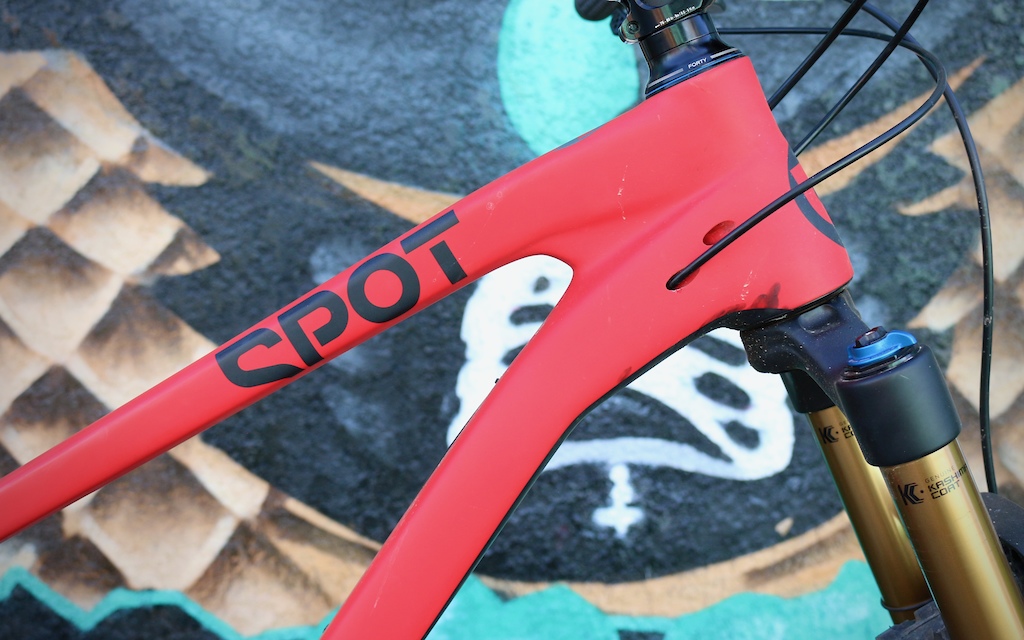
Carbon fiber is used to manufacture the entire frame, including its swingarm and both suspension links.
The Details
The Ryve frame is carbon fiber from front to back, including the upper trunion-mount suspension link, half of the lower link (more on that later), and the swingarm. The rear brake line is run externally but fits into a channel (Spot calls it 'Groovy Guides') that's molded into the left side of the down tube, while the shift and dropper post lines are hidden inside the front triangle. Spot's done a nice job of this, with the frame looking very clean in person and plenty of room for the largest of water bottles inside the front triangle.
There's a second bottle mount on the underside of the down tube, too, as well as a stick-on pad to ward off any pointy rocks thrown up by the front wheel.
Rather than the usual arrangement, the bottom of the Fox shock sits in a pass-through tunnel (they call it the 'DoppelBox') at the bottom of the down tube that, according to Spot, helps to "boost torsional stiffness between the headtube and bottom bracket, transferring shock forces along the inside walls.''
They mention that it lets dirt and water flow through rather than build-up, while also positioning the shock a bit lower in the frame.
The rear brake caliper attaches to a bolt-on aluminum adapter that's held in alignment via the thru-axle, and the brake line travels under the chainstay rather than inside the swingarm, just like the shift line on the opposite side. Pivots are all dual-row, full-complement sealed bearings, and the main pivot axles use locking conical hardware with O-ring seals for extra protection. One thing that you won't see are ISCG tabs; this is a no-guide bike.
Remember the 100mm-travel Ryve I mentioned earlier? They're both assembled around the exact same frame, with the 115mm-travel bike tested here using a 165mm x 45mm Fox shock and the 100mm bike getting a 165mm x 40mm unit. Claimed frame weight is a believable 5.5lb (with shock), and my test bike came in at a rather sporty 24.7 lb (11.2 kg). No excuses, then.
The Ryve frame is carbon fiber from front to back, including the upper trunion-mount suspension link, half of the lower link (more on that later), and the swingarm. The rear brake line is run externally but fits into a channel (Spot calls it 'Groovy Guides') that's molded into the left side of the down tube, while the shift and dropper post lines are hidden inside the front triangle. Spot's done a nice job of this, with the frame looking very clean in person and plenty of room for the largest of water bottles inside the front triangle.
There's a second bottle mount on the underside of the down tube, too, as well as a stick-on pad to ward off any pointy rocks thrown up by the front wheel.
Rather than the usual arrangement, the bottom of the Fox shock sits in a pass-through tunnel (they call it the 'DoppelBox') at the bottom of the down tube that, according to Spot, helps to "boost torsional stiffness between the headtube and bottom bracket, transferring shock forces along the inside walls.''
They mention that it lets dirt and water flow through rather than build-up, while also positioning the shock a bit lower in the frame.
The rear brake caliper attaches to a bolt-on aluminum adapter that's held in alignment via the thru-axle, and the brake line travels under the chainstay rather than inside the swingarm, just like the shift line on the opposite side. Pivots are all dual-row, full-complement sealed bearings, and the main pivot axles use locking conical hardware with O-ring seals for extra protection. One thing that you won't see are ISCG tabs; this is a no-guide bike.
Remember the 100mm-travel Ryve I mentioned earlier? They're both assembled around the exact same frame, with the 115mm-travel bike tested here using a 165mm x 45mm Fox shock and the 100mm bike getting a 165mm x 40mm unit. Claimed frame weight is a believable 5.5lb (with shock), and my test bike came in at a rather sporty 24.7 lb (11.2 kg). No excuses, then.
Living Link Suspension
The Ryve's rear-suspension looks like yet another straightforward and very common dual-link system, except it isn't. See the bike's lower link? It's actually a nearly hidden carbon fiber leaf spring that supplements the Fox shock, and Spot says that it plays an important role in the Ryve's performance.
Just like many other dual-link bikes out there, when the Ryve’s rear suspension compresses both links rotate clockwise; the top link compresses the shock while the bottom link rotates upwards. The carbon leaf spring (AKA the bottom link) is completely flat and unloaded at top-out and bottom-out, Spot's Andrew Lumpkin explained to me, meaning that it isn't putting any force into the suspension at those times, and the Fox shock is doing all of the work. But the leaf spring is flexed, or loaded, when the bike is sitting between 25-percent of its travel, otherwise known as the approximate sag point, and 75-percent of full travel. In other words, Spot is using the carbon leaf spring to alter the spring rate in the middle portion of the travel.
![Spot Ryve 115 29 review]()
According to Lumpkin, this approach lets them create the spring curve they wanted by figuring out their ideal leverage ratios for the beginning and ending parts of the travel. Then they used the carbon leaf spring to help tune how the suspension performs in the middle part of its travel where it's loaded and where you spend most of your time.
It's claimed to make the bike very efficient but, more interestingly, they’re also saying that the flexing leaf spring is storing energy that’s returned when the suspension extends. So much so that Spot claims that it can even supply extra “pop” to help you leave the ground.
But wouldn't the damper just absorb it anyway? Now let's picture the Ryve's rear-suspension bottomed-out after an impact and starting to rebound.
Because the leaf spring's forces aren't being applied to the suspension from bottom-out to 25-percent extension, the rebound speed will be relatively slow until the leaf spring begins to enter the equation. From that point to 75-percent extension, the leaf spring is flexing and working in conjunction with the shock's air spring. Then, when the suspension extends past that point, the leaf spring goes straight and no longer applies any force, which means a slower relative rebound speed near top-out than if the carbon was replaced with a normal, non-flexy link.
What all that means is slower, presumably more controlled rebound after big impacts that use most of the bike's travel, faster rebound after small and medium impacts in the middle portion of the bike's travel, and then slower rebound (relative to if the link didn't flex) at the top of the travel.
The benefits to all that, Lumpkin told me, is that they can ''preserve the big hit recovery near bottom out, but also preserve the traction benefits of slower rebound near top out.''
The Ryve's rear-suspension looks like yet another straightforward and very common dual-link system, except it isn't. See the bike's lower link? It's actually a nearly hidden carbon fiber leaf spring that supplements the Fox shock, and Spot says that it plays an important role in the Ryve's performance.
Just like many other dual-link bikes out there, when the Ryve’s rear suspension compresses both links rotate clockwise; the top link compresses the shock while the bottom link rotates upwards. The carbon leaf spring (AKA the bottom link) is completely flat and unloaded at top-out and bottom-out, Spot's Andrew Lumpkin explained to me, meaning that it isn't putting any force into the suspension at those times, and the Fox shock is doing all of the work. But the leaf spring is flexed, or loaded, when the bike is sitting between 25-percent of its travel, otherwise known as the approximate sag point, and 75-percent of full travel. In other words, Spot is using the carbon leaf spring to alter the spring rate in the middle portion of the travel.
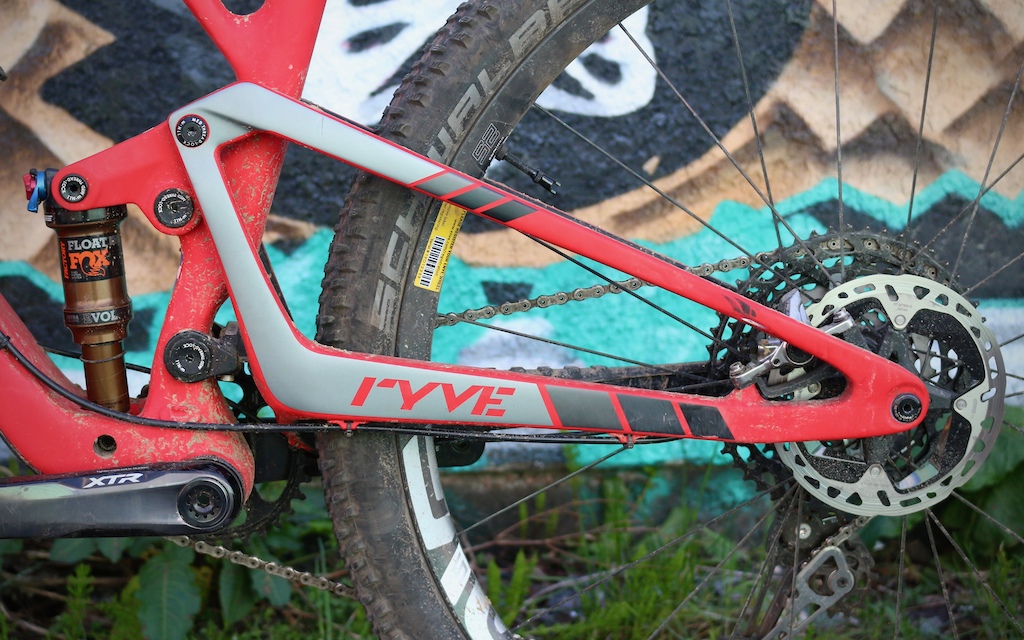
The Ryve's 115mm of rear-wheel-travel is controlled by a dual-link layout with a twist: The bottom link employs a flat carbon fiber leaf spring.
According to Lumpkin, this approach lets them create the spring curve they wanted by figuring out their ideal leverage ratios for the beginning and ending parts of the travel. Then they used the carbon leaf spring to help tune how the suspension performs in the middle part of its travel where it's loaded and where you spend most of your time.
It's claimed to make the bike very efficient but, more interestingly, they’re also saying that the flexing leaf spring is storing energy that’s returned when the suspension extends. So much so that Spot claims that it can even supply extra “pop” to help you leave the ground.
But wouldn't the damper just absorb it anyway? Now let's picture the Ryve's rear-suspension bottomed-out after an impact and starting to rebound.
Because the leaf spring's forces aren't being applied to the suspension from bottom-out to 25-percent extension, the rebound speed will be relatively slow until the leaf spring begins to enter the equation. From that point to 75-percent extension, the leaf spring is flexing and working in conjunction with the shock's air spring. Then, when the suspension extends past that point, the leaf spring goes straight and no longer applies any force, which means a slower relative rebound speed near top-out than if the carbon was replaced with a normal, non-flexy link.
What all that means is slower, presumably more controlled rebound after big impacts that use most of the bike's travel, faster rebound after small and medium impacts in the middle portion of the bike's travel, and then slower rebound (relative to if the link didn't flex) at the top of the travel.
The benefits to all that, Lumpkin told me, is that they can ''preserve the big hit recovery near bottom out, but also preserve the traction benefits of slower rebound near top out.''
Geometry
My large-sized Ryve gets a 470mm reach that feels bang-on to me, while the extra-large stretches out to 495mm. Shorter folks can look at the medium (445mm) and the small (420mm), and all four sizes get the same 435mm chainstay length. Steering isn't full-on cross-country race, but it's also not designed to be a lazy-handling trail bike, either, hence the 67.4-degree head angle with a 120mm-travel fork. Adding another 10mm of travel would bring it closer to 67-degrees, which I suspect some Ryve owners have done, but I kept the stock Fox Float 34 Step-Cast on the front of the bike.
Spot lists the effective seat angle as 75-degrees, and it's worth noting that the extra-large size does get a seat angle that's 1-degree steeper in order to compensate for the additional height without putting you beanstalks too far behind the bottom bracket. I should also mention the 483mm seat tube length of my large, which isn't exactly short by today's standards. Those with stubby inseams should take note - that length could limit the amount of possible dropper post travel.
My large-sized Ryve gets a 470mm reach that feels bang-on to me, while the extra-large stretches out to 495mm. Shorter folks can look at the medium (445mm) and the small (420mm), and all four sizes get the same 435mm chainstay length. Steering isn't full-on cross-country race, but it's also not designed to be a lazy-handling trail bike, either, hence the 67.4-degree head angle with a 120mm-travel fork. Adding another 10mm of travel would bring it closer to 67-degrees, which I suspect some Ryve owners have done, but I kept the stock Fox Float 34 Step-Cast on the front of the bike.
Spot lists the effective seat angle as 75-degrees, and it's worth noting that the extra-large size does get a seat angle that's 1-degree steeper in order to compensate for the additional height without putting you beanstalks too far behind the bottom bracket. I should also mention the 483mm seat tube length of my large, which isn't exactly short by today's standards. Those with stubby inseams should take note - that length could limit the amount of possible dropper post travel.
Climbing
I have a triathlete friend who, despite many years of training, eating like a small bird who counts calories, and sporting a single-digit body fat percentage that makes Eliud Kipchoge look a bit chonky, hasn't had success to equal his effort. Why you'd want to both swim and run (and on the same day?!) are a mystery to me, but I do have a theory about his results: Trying to be good at more than one thing is, in my experience, pretty damn difficult, and usually results in being a bit so-so at most things. Especially when they're as opposed as climbing and descending are.
It was quickly obvious that the red rocket isn't trying to be the kind of trail bike that's a blast when you're hanging with your enduro bros between weekend epics. Actually, it might not be trying to be a trail bike at all: ''It’s a precision rocket made for conquering Leadville and the epic race dates that crowd your calendar," Spot says, emphasizing that it's more of a race bike modified for ''everyday shredding'' than anything else. And it feels every bit the race bike on the climbs, too, with it ready to jump forward at the mere thought of a KOM attempt or the chance to gap your riding buddies.
I have a triathlete friend who, despite many years of training, eating like a small bird who counts calories, and sporting a single-digit body fat percentage that makes Eliud Kipchoge look a bit chonky, hasn't had success to equal his effort. Why you'd want to both swim and run (and on the same day?!) are a mystery to me, but I do have a theory about his results: Trying to be good at more than one thing is, in my experience, pretty damn difficult, and usually results in being a bit so-so at most things. Especially when they're as opposed as climbing and descending are.
It was quickly obvious that the red rocket isn't trying to be the kind of trail bike that's a blast when you're hanging with your enduro bros between weekend epics. Actually, it might not be trying to be a trail bike at all: ''It’s a precision rocket made for conquering Leadville and the epic race dates that crowd your calendar," Spot says, emphasizing that it's more of a race bike modified for ''everyday shredding'' than anything else. And it feels every bit the race bike on the climbs, too, with it ready to jump forward at the mere thought of a KOM attempt or the chance to gap your riding buddies.
Mike Levy
Location: Squamish, BC, Canada
Age: 39
Height: 5'10
Inseam: 33.5"
Weight: 156 lb
Industry affiliations / sponsors: None
Instagram: @killed_by_death
Location: Squamish, BC, Canada
Age: 39
Height: 5'10
Inseam: 33.5"
Weight: 156 lb
Industry affiliations / sponsors: None
Instagram: @killed_by_death
It's not that the Santa Cruz or Norco are inefficient, it's just that they sacrifice a bit of speed on the ups for more speed on the downs. A bit of an unfair comparison then, but good for some perspective as to where these things sit against each other.
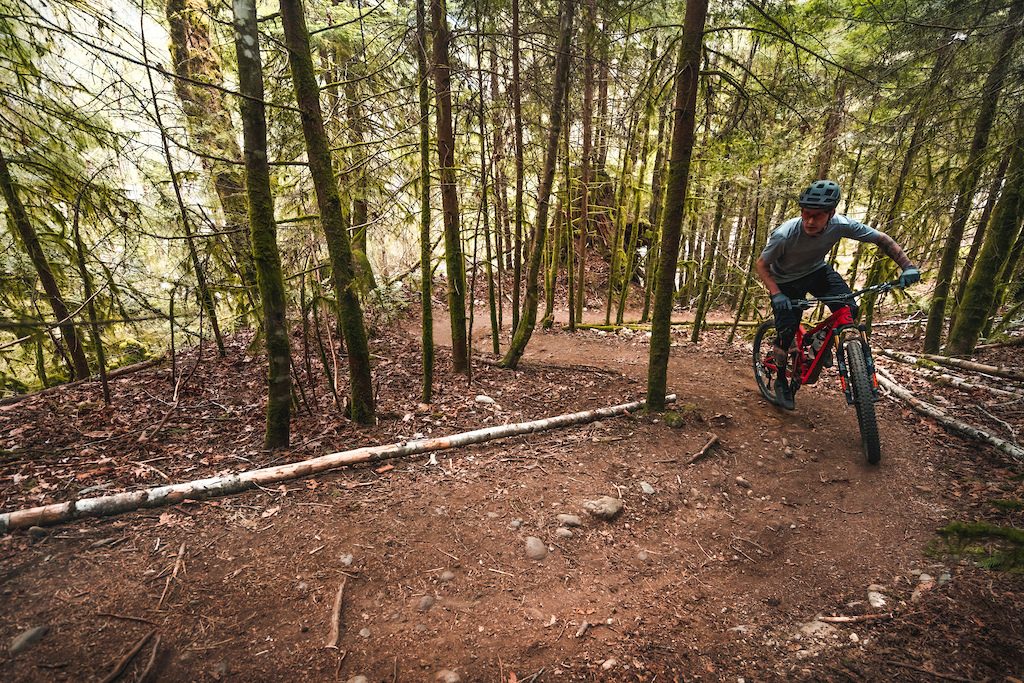
The Ryve is an absolute rocketship up the climbs, feeling every bit the sporty race bike that's hidden under the dropper post and 120mm-travel fork.
Kona's new Hei Hei is probably a better competitor given that it's said to be a race bike, but it can't match the Ryve's efficiency, either. Spot will sell you a bike with a lockout if you're (presumably) European and really, really want one, but it's not a standard option and about as useful as having one on your downhill bike.
Its low weight certainly helps the bike's cause as well, especially its tires and wheels, and I ended up putting down some of my quickest climbing times while out on heaters aboard the Ryve. That said, it isn't quite the same hero when you are getting into more technical, tricky uphills that depend more on skill than how many intervals and squats you've been doing during self-isolation.
The bike's rear suspension is as forgiving as you'd think 115mm of race-bred travel would be - meaning that it's not at all - and the 2.25" wide Schwalbe Racing Ralph rear tire rolls fast but might as well be completely slick if it's even the slightest bit damp or dusty. Neither helps in the traction department, so I'd put something grabbier on the back of the bike if damp or dusty was the norm in my 'hood. The steering is quick, though, which helps the Ryve wiggle through things with much less effort than would be required on other short-travel, burlier bikes. Yes, I know you can probably clean all the techy ups on your burly trail bike @mikekazimer, and that's super-duper, but I'll be too far ahead on the Ryve to see you dabbing anyway.
On a typical trail ride most of us just want to get to the top, feel okay doing it, and maybe think about some fitness if we lean that way. And most of us are happy to sacrifice something on the ups for something extra on the downs. I mean, we all know which of those two directions offers the most smiles, so it's not exactly a stupid way to do it. But Spot's Ryve 115 is what happens when you approach climbing from the opposite angle, focusing on speed and efficiency before descending prowess.
Kipchoge isn't trying to be good at parkour, and the Ryve isn't trying to be a relaxed, deep-feeling trail bike. Both of them are mind-blowingly fast, so I guess it works.
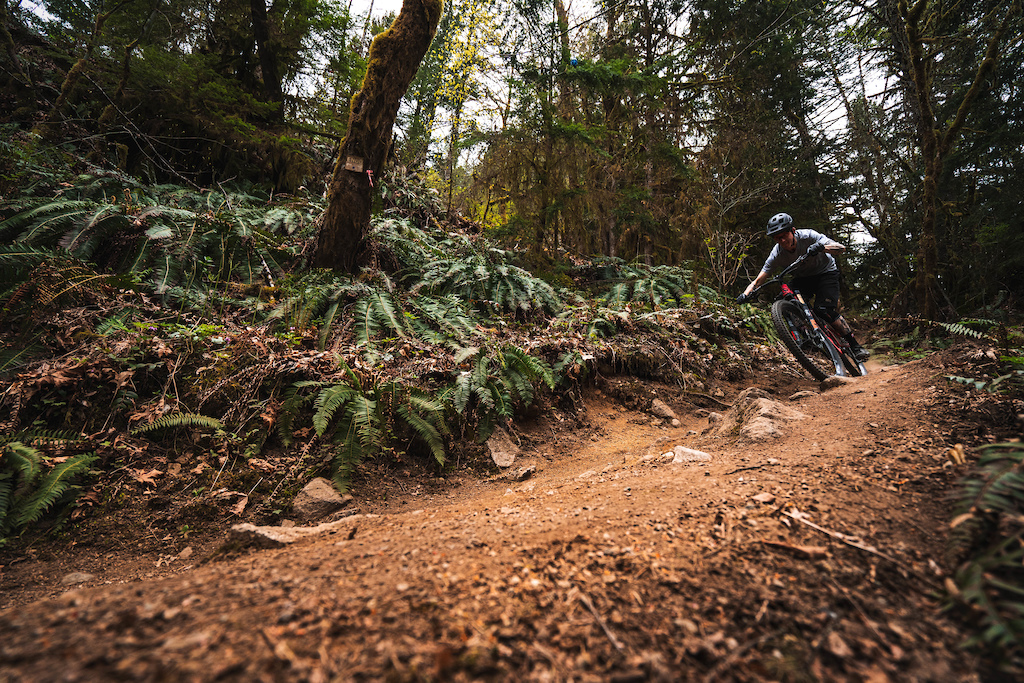
The Ryve best suits flowy, fun descents that don't put your life on the line, and it loves to pump rolling terrain for extra speed.
Descending
Squamish, BC, is where I call home, with Whistler only 30-minutes up the road and North Vancouver's rooty, twisty trails 30-minutes in the opposite direction. As you can imagine, short-travel bikes with race-y intentions are outnumbered a-thousand-to-one in these parts by well-used enduro rigs closer to 40 than 20 pounds. And for good reason; much of the local terrain aims straight down, is full of pointy rocks waiting to punch holes in your ultra-light wheels, toilet paper-sidewall tires, and Lycra-covered skin, and it's often covered with anaconda-like roots. It's definitely wet, too.
The Spot wasn't made for those try-and-maybe-die chutes and slabs, but a skilled pair of hands and good line choices will see the red bike through most of it without issue. Remember, the Ryve is about as cross-country as a trail bike can be without you needing to wear bib shorts and a visor-less helmet to ride it. In other words, me telling you that things get a bit wild on the scary stuff is about the same as a breaking story on the homepage about how an enduro bike is a real pig at cross-country races. Don't put it past us.
Sure, bigger rubber, a 130mm fork, and some other changes could help the Ryve on the scary stuff, but I'd argue that you'd be better off on a different, burlier machine than diluting the Spot's sportiness in search of confidence. There are all sorts of bikes to pick from if that's your jam, but the Ryve isn't one of them.
![Spot Ryve 115 29 review photo by Max Barron]()
Dialing back the terrain from f*ck-no to more-flow allows the 115mm-travel Ryve to come into its own, with the peppiness that makes it such a great climber also making it a blast on the descents. My closest riding area is a local hill known as Valleycliffe, a small mountain crisscrossed by a confusing maze of endless rolling trails, many of which require work to get the most out of. It's here where the Ryve makes brawnier trail bikes like the Tallboy and Optic feel slow and muted in their responses.
One of my favorite bits sees a long section of singletrack angled downward slightly, but not nearly enough to be called fast, and I'm usually taking careful stabs at the pedals for more speed while hoping I don't catch a rock or root and get scorpioned so hard that my shoes come off. Again. I've ridden this trail on pretty much every long-term test bike I've had over the last couple of years, but it was an entirely different experience on the Spot - it was way faster. The Ryve responds to pumping the terrain and using backsides in a way that softer, slacker, more forgiving bikes can only dream of, and the effect is a lot of speed. The Tallboy, Optic, and Hei Hei all require less effort in those settings than longer-travel rigs, but on the Ryve, it's as if the trail is covered in speed-boosting arrows from Mario Kart and those other three are stuck in axle-deep mud.
![Spot Ryve 115 29 review photo by Max Barron]()
The faster you're going, the faster you need to think, and that's especially true on the Ryve. The steering is more cross-country than trail bike, but it's far from being nervous. While some quick-handling machines can feel as if they're just waiting to toss you out the front door, the Spot manages to offer a needle-precise front-end without you constantly being in fear of it knifing to one side unexpectedly. It also gives it the maneuverability that other trail bikes can only dream of. If you love nothing more than a well-timed manual, nose bonk here or there, or silly-but-fun line, you'll get more than your fair share of laughs from the Ryve.
The bike's rear-suspension isn't nearly as active and forgiving as the back of the Hei Hei, and rocky ground will knock the Spot around a bit. Tire choice can make a big difference here, though, and the stock, low-volume Schwalbe rubber leans more towards less rolling speed than more traction. Because of this, a light touch on the brake levers is needed when it's wet or dusty to keep the bike from sliding too much. Or maybe sliding just the right amount, amirite?
I settled on a standard 25-percent sag number and never once felt a clang at bottom-out, despite some questionable line choices, so there's certainly no need to run it any firmer. And what about Spot's claims that the carbon fiber Living Link suspension can supply additional pop to help get off the ground? I'm not so sure, but I can't argue that the Ryve does have that energetic personality that can make a short-travel bike so much fun.
So, what does all that mean, and where does the Ryve sit in the world of short-travel bikes? If you're looking for a new-school ripper to send off the jumps while keeping up with your buddies on longer-travel bikes, the Spot isn't for you. This is a bike made to cover ground quickly and efficiently, and it's far more interested in snagging those uphill KOMs than going fast down rowdy descents. But that also means that it's a demon of a bike on rolling terrain and downhills that don't look like EWS stages, which is a hell of a lot of the world.
Squamish, BC, is where I call home, with Whistler only 30-minutes up the road and North Vancouver's rooty, twisty trails 30-minutes in the opposite direction. As you can imagine, short-travel bikes with race-y intentions are outnumbered a-thousand-to-one in these parts by well-used enduro rigs closer to 40 than 20 pounds. And for good reason; much of the local terrain aims straight down, is full of pointy rocks waiting to punch holes in your ultra-light wheels, toilet paper-sidewall tires, and Lycra-covered skin, and it's often covered with anaconda-like roots. It's definitely wet, too.
The Spot wasn't made for those try-and-maybe-die chutes and slabs, but a skilled pair of hands and good line choices will see the red bike through most of it without issue. Remember, the Ryve is about as cross-country as a trail bike can be without you needing to wear bib shorts and a visor-less helmet to ride it. In other words, me telling you that things get a bit wild on the scary stuff is about the same as a breaking story on the homepage about how an enduro bike is a real pig at cross-country races. Don't put it past us.
Sure, bigger rubber, a 130mm fork, and some other changes could help the Ryve on the scary stuff, but I'd argue that you'd be better off on a different, burlier machine than diluting the Spot's sportiness in search of confidence. There are all sorts of bikes to pick from if that's your jam, but the Ryve isn't one of them.
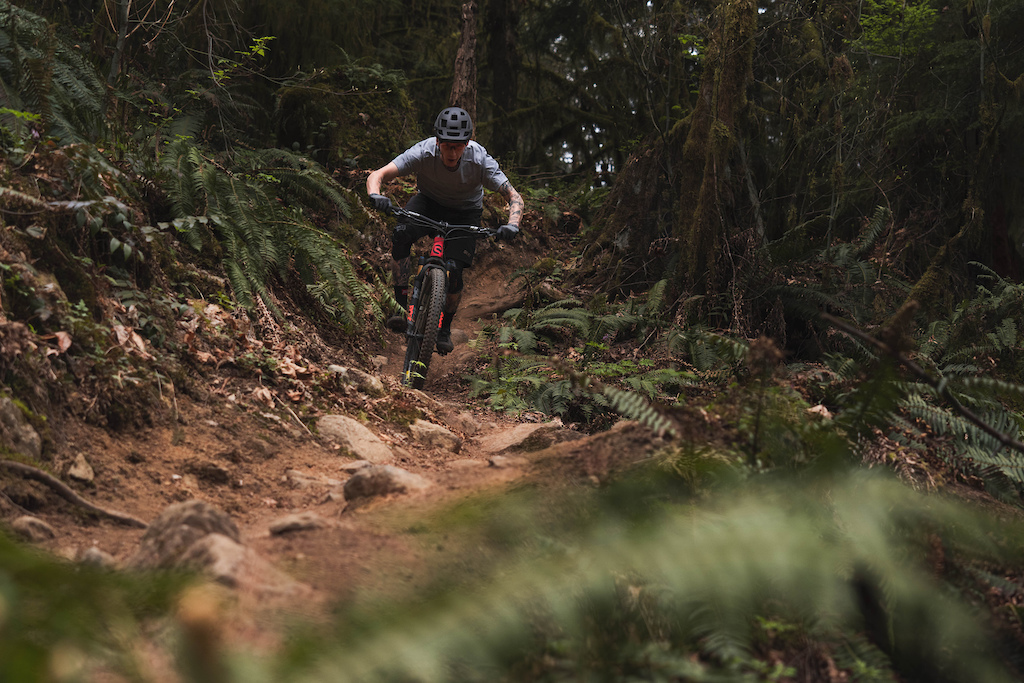
The Ryve never feels like it has more than 115mm of rear-wheel-travel, which is exactly what some riders are looking for.
Dialing back the terrain from f*ck-no to more-flow allows the 115mm-travel Ryve to come into its own, with the peppiness that makes it such a great climber also making it a blast on the descents. My closest riding area is a local hill known as Valleycliffe, a small mountain crisscrossed by a confusing maze of endless rolling trails, many of which require work to get the most out of. It's here where the Ryve makes brawnier trail bikes like the Tallboy and Optic feel slow and muted in their responses.
One of my favorite bits sees a long section of singletrack angled downward slightly, but not nearly enough to be called fast, and I'm usually taking careful stabs at the pedals for more speed while hoping I don't catch a rock or root and get scorpioned so hard that my shoes come off. Again. I've ridden this trail on pretty much every long-term test bike I've had over the last couple of years, but it was an entirely different experience on the Spot - it was way faster. The Ryve responds to pumping the terrain and using backsides in a way that softer, slacker, more forgiving bikes can only dream of, and the effect is a lot of speed. The Tallboy, Optic, and Hei Hei all require less effort in those settings than longer-travel rigs, but on the Ryve, it's as if the trail is covered in speed-boosting arrows from Mario Kart and those other three are stuck in axle-deep mud.

The bike's Racing Ralph rear tire means that it rolls quite fast, but it also made for some fun, drifty corners.
The faster you're going, the faster you need to think, and that's especially true on the Ryve. The steering is more cross-country than trail bike, but it's far from being nervous. While some quick-handling machines can feel as if they're just waiting to toss you out the front door, the Spot manages to offer a needle-precise front-end without you constantly being in fear of it knifing to one side unexpectedly. It also gives it the maneuverability that other trail bikes can only dream of. If you love nothing more than a well-timed manual, nose bonk here or there, or silly-but-fun line, you'll get more than your fair share of laughs from the Ryve.
The bike's rear-suspension isn't nearly as active and forgiving as the back of the Hei Hei, and rocky ground will knock the Spot around a bit. Tire choice can make a big difference here, though, and the stock, low-volume Schwalbe rubber leans more towards less rolling speed than more traction. Because of this, a light touch on the brake levers is needed when it's wet or dusty to keep the bike from sliding too much. Or maybe sliding just the right amount, amirite?
I settled on a standard 25-percent sag number and never once felt a clang at bottom-out, despite some questionable line choices, so there's certainly no need to run it any firmer. And what about Spot's claims that the carbon fiber Living Link suspension can supply additional pop to help get off the ground? I'm not so sure, but I can't argue that the Ryve does have that energetic personality that can make a short-travel bike so much fun.
So, what does all that mean, and where does the Ryve sit in the world of short-travel bikes? If you're looking for a new-school ripper to send off the jumps while keeping up with your buddies on longer-travel bikes, the Spot isn't for you. This is a bike made to cover ground quickly and efficiently, and it's far more interested in snagging those uphill KOMs than going fast down rowdy descents. But that also means that it's a demon of a bike on rolling terrain and downhills that don't look like EWS stages, which is a hell of a lot of the world.
Technical Report
Shimano M9100 XTR Brakes: The two-piston calipers and non-Servo Wave levers say cross-country AF, but Spot did spec a 180mm rotor up front to help slow you down. While they're not as powerful feeling as the Servo Wave-equipped version, they're far less grabby and easier to modulate, especially when traction isn't ideal. Sure, heavier riders might want to see four-piston brakes, but given that the Ryve is a short-travel trail bike with race-y intentions, they aren't out of line and worked well for me.
ENVE M525 rims and Industry Nine's Hydra Rear Hub: This crazy hub offers just 0.52-degrees between engagement points thanks to a drive ring with 115-teeth and six pawls that each engage that drive ring individually. It's an intricate-looking thing, but it sounds like there are a few hundred giant robot hornets following you when you coast. I love it, but other riders did comment that I seemed even more annoying than usual.
As for the Gucci ENVE M25 rims, I would have called them 'M341' because they weigh a hardly believable 341-grams each. They're also still perfectly true, despite me definitely riding them beyond their cross-country intentions.
Schwalbe Tires: The Ryve 115 really is a slightly longer-travel cross-country bike, so it's light and speedy Schwalbe rubber are fit for purpose. That said, you'll probably end up considering something a bit more substantial than the 2.25" Racing Ralph that comes stock on the back of the bike. There's a 2.35" Nobby Nic that comes on the front, though, so a matching Nic on the back would make sense if your trails are steeper and wetter.
Shimano M9100 XTR Brakes: The two-piston calipers and non-Servo Wave levers say cross-country AF, but Spot did spec a 180mm rotor up front to help slow you down. While they're not as powerful feeling as the Servo Wave-equipped version, they're far less grabby and easier to modulate, especially when traction isn't ideal. Sure, heavier riders might want to see four-piston brakes, but given that the Ryve is a short-travel trail bike with race-y intentions, they aren't out of line and worked well for me.
ENVE M525 rims and Industry Nine's Hydra Rear Hub: This crazy hub offers just 0.52-degrees between engagement points thanks to a drive ring with 115-teeth and six pawls that each engage that drive ring individually. It's an intricate-looking thing, but it sounds like there are a few hundred giant robot hornets following you when you coast. I love it, but other riders did comment that I seemed even more annoying than usual.
As for the Gucci ENVE M25 rims, I would have called them 'M341' because they weigh a hardly believable 341-grams each. They're also still perfectly true, despite me definitely riding them beyond their cross-country intentions.
Schwalbe Tires: The Ryve 115 really is a slightly longer-travel cross-country bike, so it's light and speedy Schwalbe rubber are fit for purpose. That said, you'll probably end up considering something a bit more substantial than the 2.25" Racing Ralph that comes stock on the back of the bike. There's a 2.35" Nobby Nic that comes on the front, though, so a matching Nic on the back would make sense if your trails are steeper and wetter.
The 120mm travel Kona Hei Hei (left) and 120mm Santa Cruz Tallboy (right) are very different from the Ryve, despite there being just 5mm difference in rear-wheel-travel.
How does it compare?
Speaking of sporty bikes, remember the Hei Hei that Kona just released in April? I spent a ton of time on that 120mm-travel 29er in the middle of testing the Ryve, and the two make an ideal comparison. However, for both using 120mm forks and having within 5mm of the same amount of rear travel, they couldn't be more different. Relatively speaking, the green Kona feels much more forgiving, and I found myself seated more often when riding it than on the Ryve for that reason. The Kona is far from being slow, but it comes across as being a nip closer to a trail bike compared to the speedy Spot that transmits more up to the rider. The best way to put it: While the Hei Hei can sometimes feel like it has an extra 20mm of squish, the Ryve always feels like it has 115mm. Depending on what you're looking for, that might be good or bad.
Speaking of trail bikes, I'm gonna bring up the Tallboy yet again. It has 120mm of travel, just 5mm more than the Ryve, but it's a very different bike made for a very different rider. While the Spot is light and fast, the Santa Cruz is a burly rig in comparison. You could do a cross-country race on either, sure, but I know which one I'd rather be on.
Pros
+ Efficient and fast, especially up the climbs
+ Great part-time race bike, part-time light-duty trail bike
+ Loves flowy, rolling terrain
Cons
- There are more forgiving bikes w/ similar travel
- More cross-country than burly trail
- Doesn't like rough, steep terrain
Author Info:
Must Read This Week
Sign Up for the Pinkbike Newsletter - All the Biggest, Most Interesting Stories in your Inbox
PB Newsletter Signup
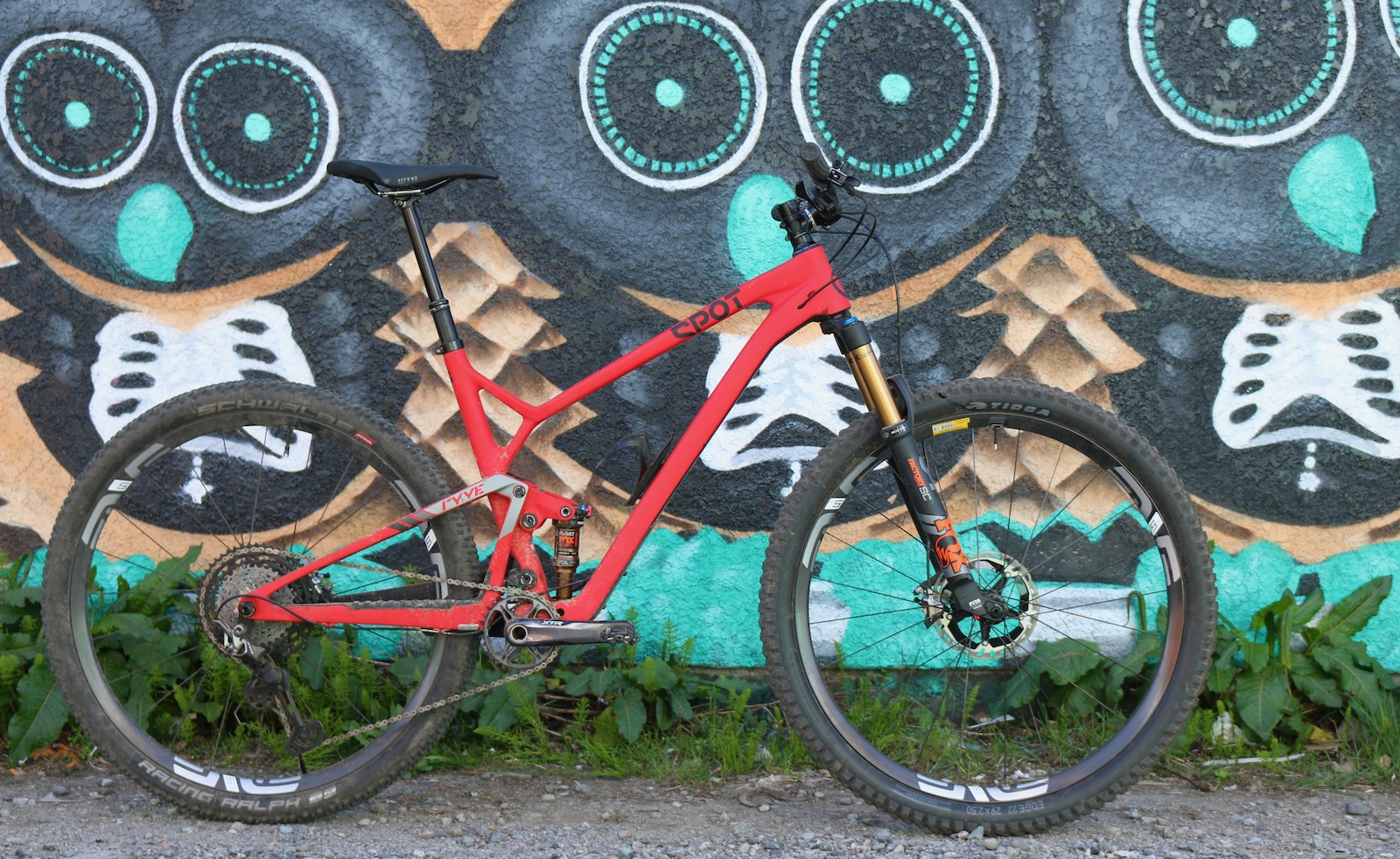
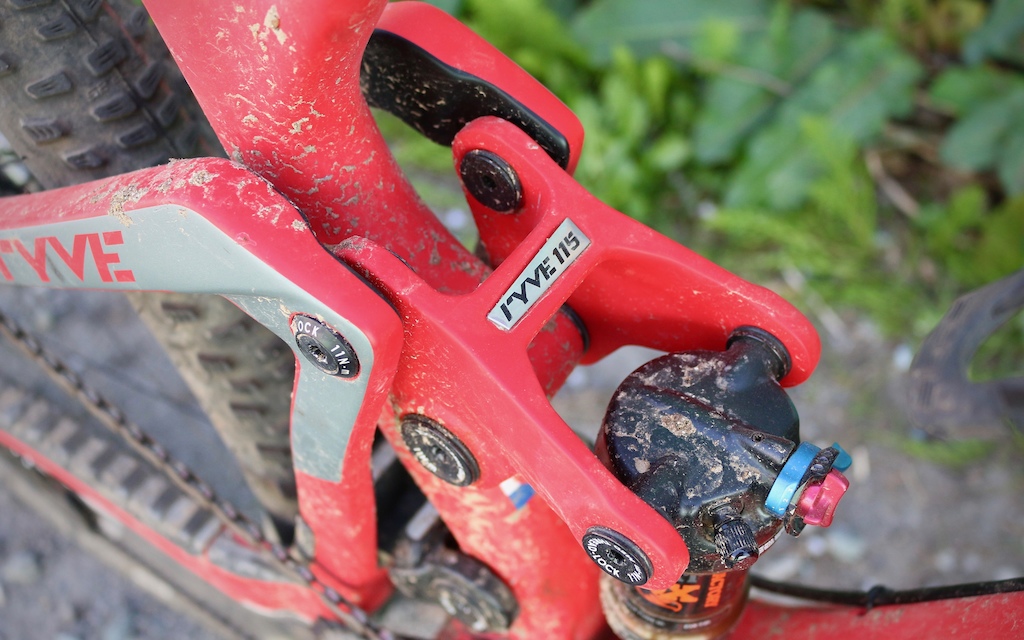


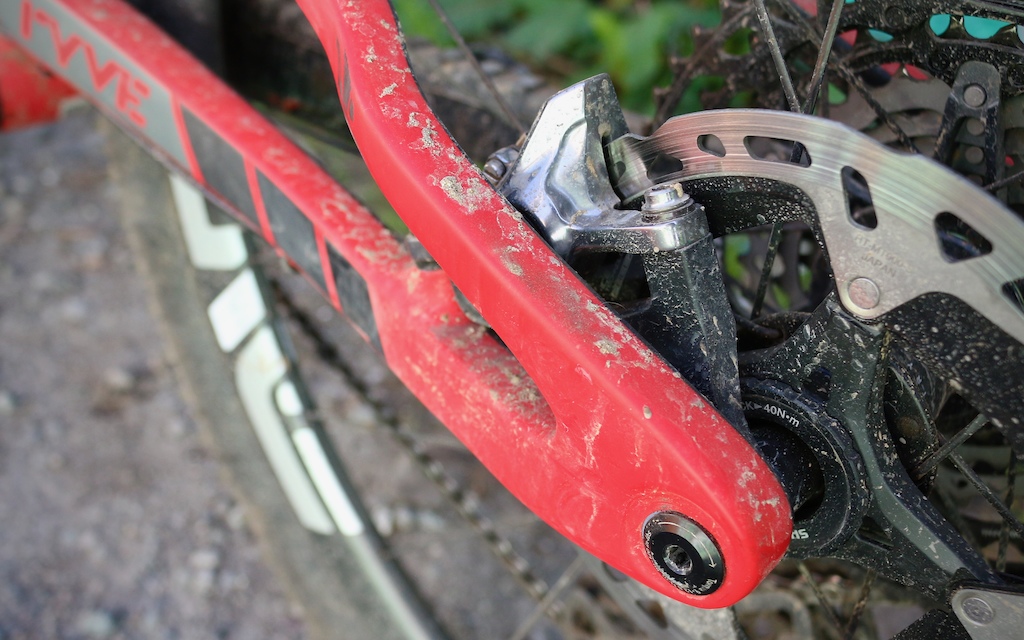

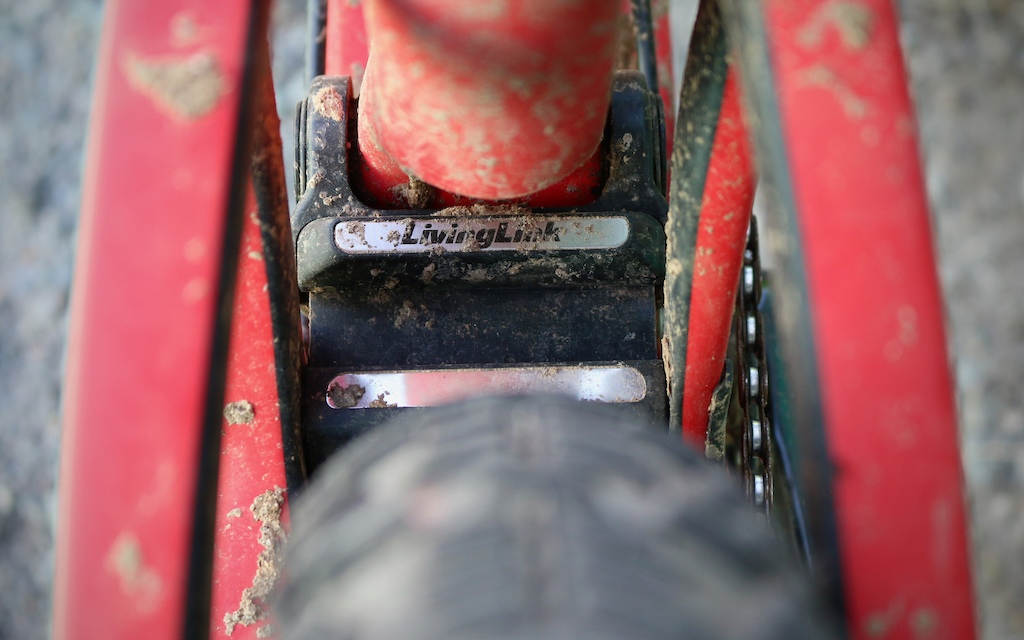




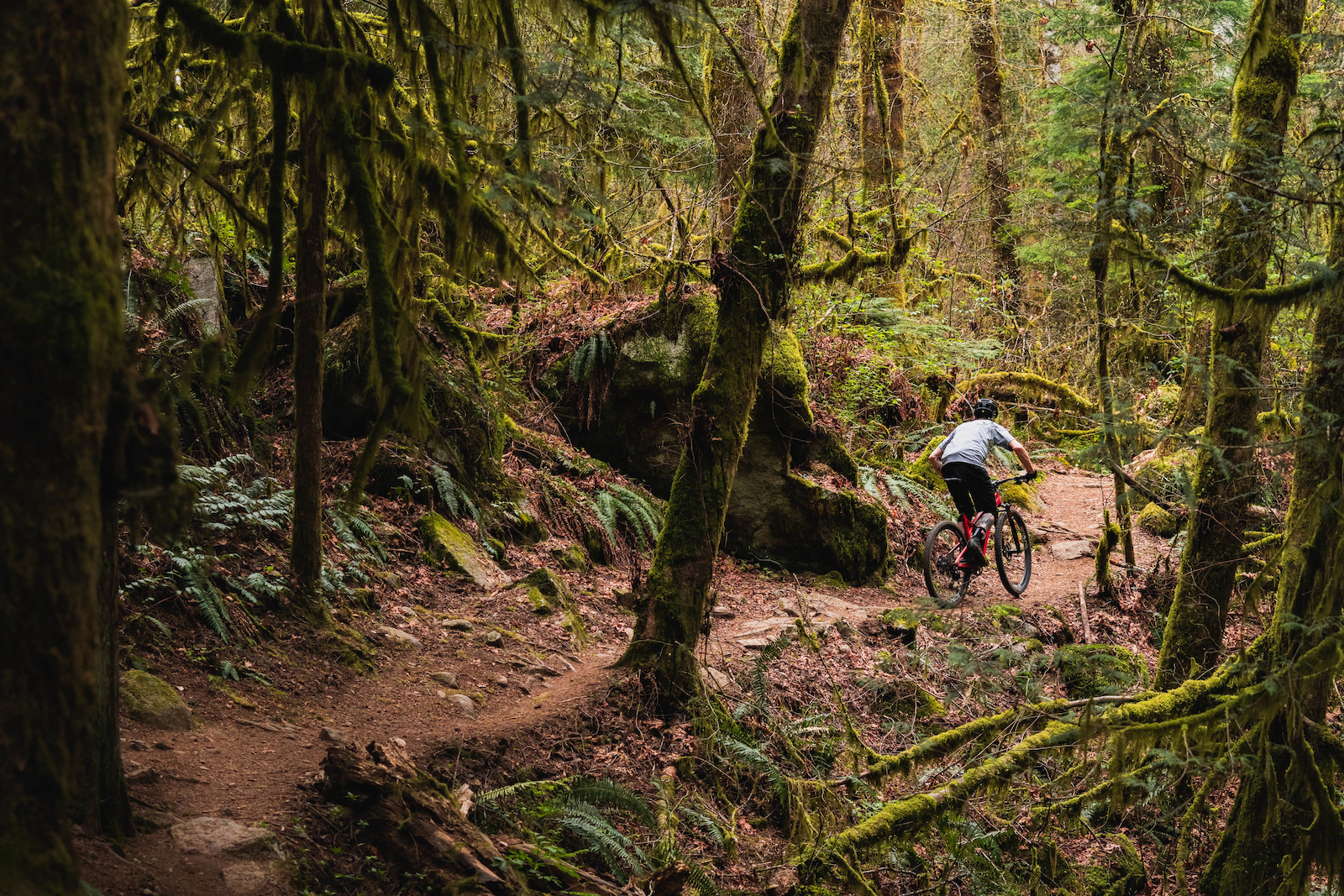

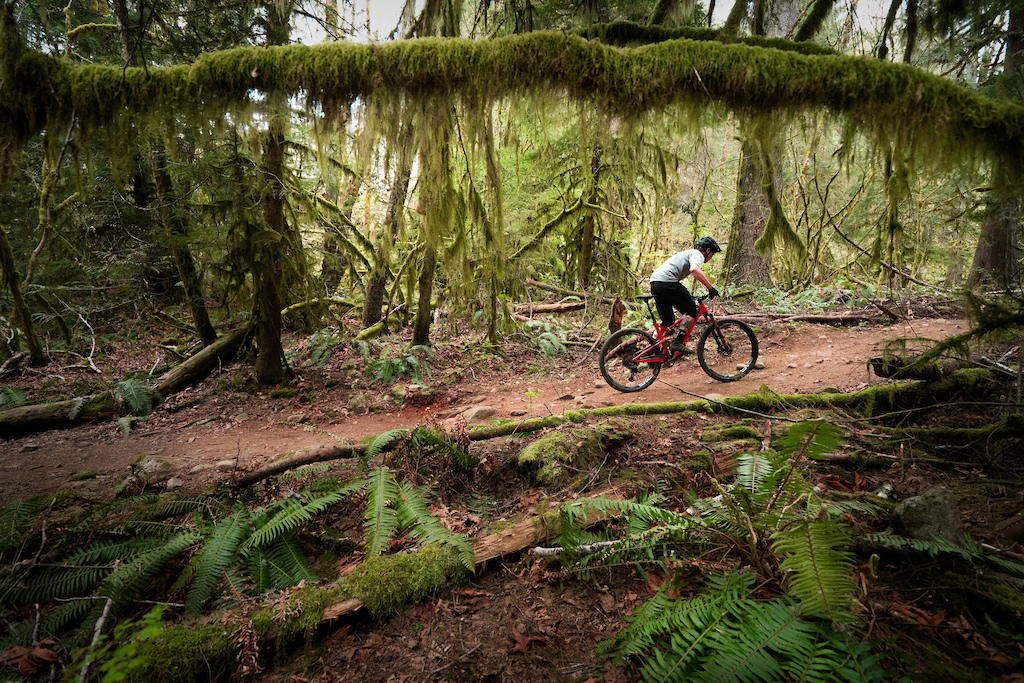
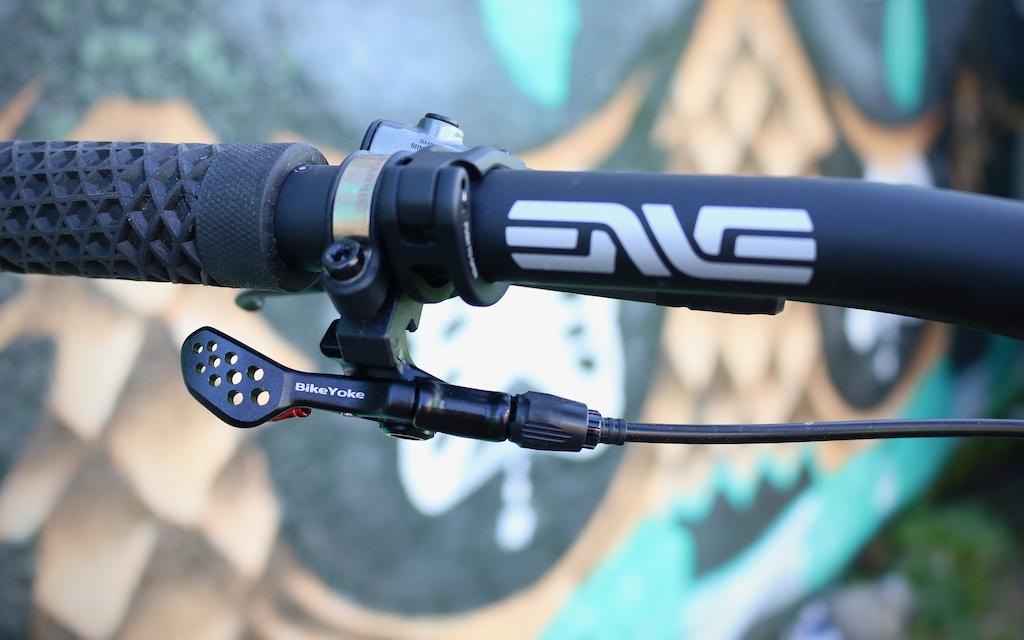
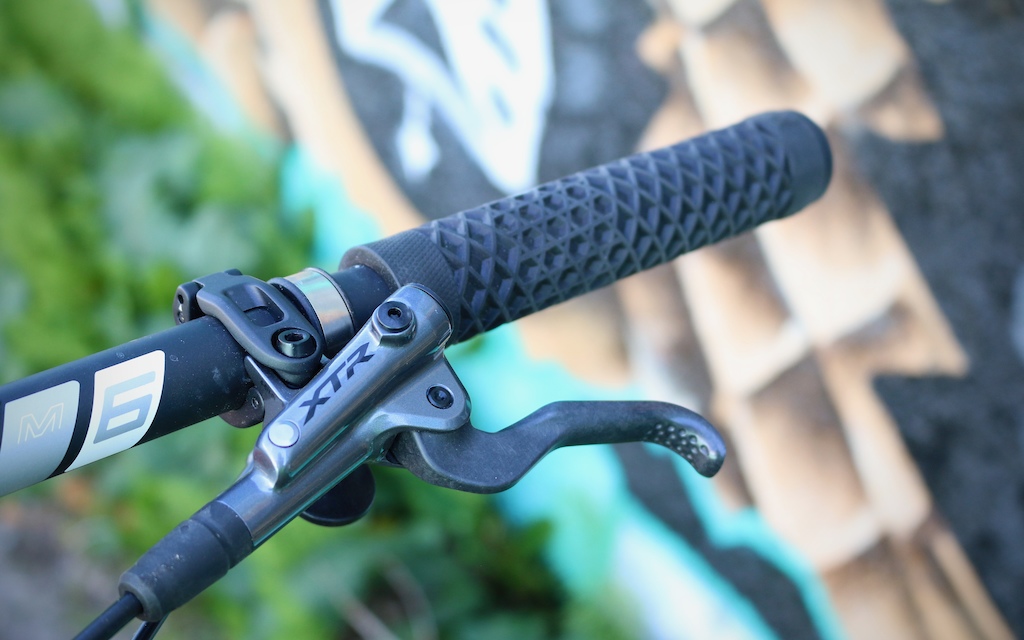

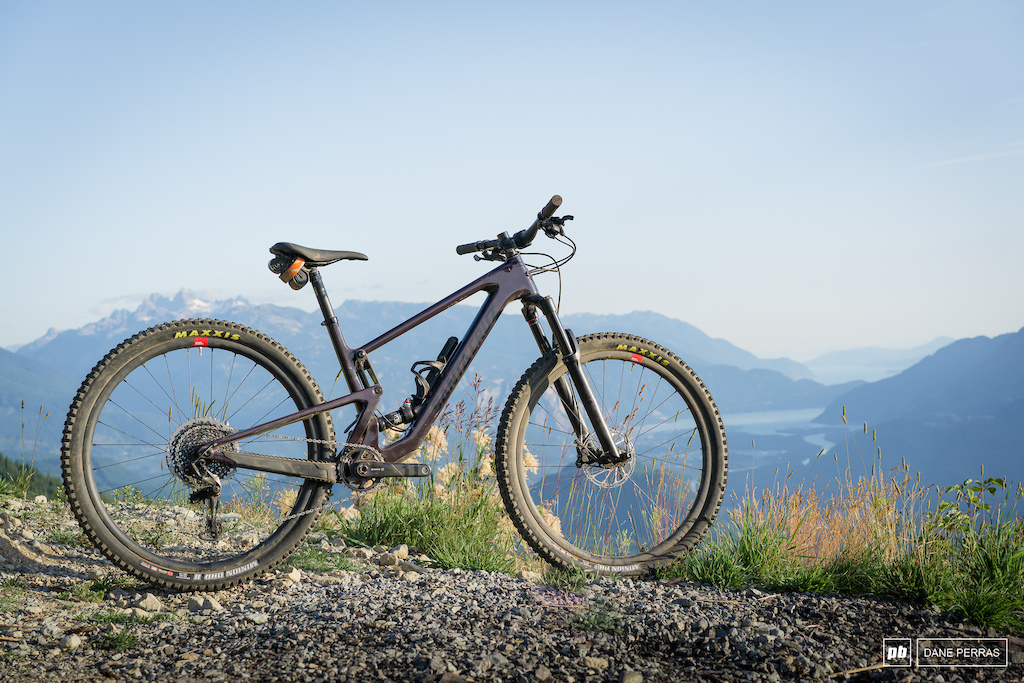

 Member since Oct 18, 2005
Member since Oct 18, 2005
Freeride
Downhill
Downduro
Enduro
Trail
Downcountry
Marathon
XC
Gravel
Did I miss anything?
Dirt jumping and trials are off on their own somewhere.
Downroad
Commuduro (I swear, there's a bloke over here doing that, middle age women driving Lancias don't appreciate it)
Twwed Rides
I guess the lateer can get the down-treatment at some point.
Downcountry-Upcountry-DownXC-XC-HardtailXC
UPDH ?
Or an Enduro ready frame/fork with good climbing geo and a slightly lighter wheel/tire set than usual ?
Upduro
That being said, my list of XCM, DXC, or whatever the heck we are calling them is: Ripley, Spesh EVO Epic, Trek Top Fuel, and now this Spot. Never been a Kona fan, but have to admit that I wouldn't pass up a smokin deal on a new Hei Hei. One of these bikes will eventually take the place of my HT Epic on days when my lower back just says "oh hell no, no riding today for you"..
Also, I miss any references to ride impressions directly related to this novel suspension system. The overall impression seems in line with the claim of increased responsiveness though.
The idea makes sense to me. A leaf spring is a linear spring, like a coil. And you can use kinematics to make it act less in certain parts of the stroke. So it's like adding a coil on top of an air spring to increase mid-stroke support without affecting progressiveness too much. The whole thing would be more clear to me if I saw a graph of force vs compression measured at the axle with a line for force caused by the shock and a line for force caused by the leaf spring.
The idea that the leaf spring 'stores energy that is returned when the suspension extends' isn't very surprising btw. It is the definition of a spring.
The management of forces during compression, I imagine, would represent a rather different picture. Firstly, suspension response would necessarily be tuned otherwise things could get out of hand. From 25% compression, i.e. Sag, to 50% compression/mid-travel deflection force of the rear wheel would be stored in both the shock spring and the leaf spring. That implies that either or both the shock sping and damping could have a lighter spec than would be common on a similar dual link bike because the leaf stiffens things up marginally. That does not imply that the suspension is less compliant than for other bikes, only that the leaf spring figures in the picture of suspension response. At mid-travel the leaf spring will offer the greatest resistance to compression that it is going to offer. After mid-travel as wheel deflection continues towards bottom out on a big hit the energy stored in the leaf spring link starts to be dissipated (and is wholly dissipated by 75% of compression). Whether the suspension offers less compliance or relatively normal suspension response during 50% to 75% of compression will be a matter of shock and leaf spring tuning. The last quarter of the compression cycle ending in bottom out is presumably relatively normal, although, again, specific shock tune determines how things work in practice.
I suspect that Spot follows the first of these two approaches. That's a guess only. It would probably make sense, though, because Spot doesn't rely on especially progressive LR curves in its suspension designs as a rule so the suspension of the Ryve, if it follows the pattern of other Spot bikes, will probably be pretty lively to begin with. Some extra escalation from the leaf spring (especially in the 25% to 50% of stroke range) will somewhat tame the generally sensitive suspension setup. (Note: Like other suspension bike designers Spot is edging towards lower leverage ratios and longer stroke shocks. I'm not sure that this bike has been designed in that way but the leaf spring would seem to fit quite well into that picture. The leaf spring seems to offer some escalation in the mid-travel range where it probably will do some good but above 75% of stroke, where the leaf spring has no effect, the low leverage ratios should offer good resistance to big hits.)
Great review, thank you
As the article is clear about, for a lot riders this setup would as burly as they need.
No, it's not an enduro or park bike, but I have a Megatower for that stuff. Combined with a fun hardtail for variety and winter riding and I think my quiver of bikes is starting to feel complete.
Can we just go ahead and scrap all designations and just start calling everything a f*cking mountain bike.
I'm looking at an XL and I see a eff STA of 76.7 - which seems steep for trail bike, let alone a XC bike. I understand the idea behind steeper STA on larger frames, but I'm pretty sure that is the only XC bike with a near 77 degree STA.
I may just go with the 115 (which comes with a slacker STA of 76 in size XL), especially since consensus seems to be that it's plenty quick enough. Anyone have thoughts?
It sounds like an absolute blast, I'm in the market for something like this but planning on waiting for the end of the year before I make a choice. Cool that there are so many rad options out!
-Spot Cycles
than
Oh well, the review itself is Spot on (I had to).
Of all the bikes ice ridden, the two most unique bikes that feel like nothing else are the spots and the revels. They feel noticeably different from anything else. The spots feel zippy and accelerated like they have an extra spring in their step. The revel feels incredibly plush yet efficient when pedalling.
The best part of XC tires is drifting every corner.
So yeah...I kinda agree with this review that light and sporty can be really fun too, even for someone who really likes going fast on steep techy stuff on a megabike. If a bike could be built light, with fast tires, but also not flat when a mellow rock casts a mere sideways glance at it, it could be a real hoot. I wish Rekon Race's (for example) could come in a burlier casing.
What is the "usual arrangement"? And how is this actually different?
Fragile- yes. But pretty grippy for most conditions and light. 2.35 is a good tire.
So I wonder, is an XC bike for riding stuff that you could do on a gravel bike? Seems like that's the market ...
An XC bike is made to go as fast as possible on a loop that includes both climbing and descending. If you rather have comfort than efficiency then an XC bike just isn't for you.
Honestly? Give it a rest people - yeah, they effed up. It happens.
Jonah Hill: People don't forget!
He could have said " Oh shit , let me fix that and look into why it broke"
There's 50 other companies that want to build me a porch.
Why the f$%^ would I get this guy to build me another ?
It's not like his porch building technology is that much better.
Nice porch - too bad it broke.
I mean to each his own. Just youtube drama and acting like this dude is your friend who was wronged, instead of a guy making money off content is just....I dunno, a bit odd.
I guess my point is how the company reacts and deals with these failures is a reflection on their commitment to customer service. When bikes are thousands of dollars and the market is ultra competitive, this matters.
As far as youtubers go, it's one way to see products tested by real humans that we can probably ride as well as or outride making their observations more relevant that those of a pro mountain biker like Kaz. ( not Levy - he's not good )
Stop calling me weird. I prefer abnormal.
I can't find instances of a lot of Rollik's breaking, can you post some? The only other I could find was on another forum, user said Spot was awesome about sending out a new triangle and updated link.
STS is a dude making money off of views, so I don't think he deserves the benefit of the doubt over a bike manufacturer. He's also not a paying customer of Spot. Don't care that much how a company pampers insta-stars, that just seems like guerrilla marketing to me. Don't want to encourage any more of that.
They re-designed the newer Rollik, but did not send out any free replacements (only the upper rocker link, but that didn't help as I know of multiple frames breaking even with that "fix"). There's more to the story too; I'd rather not go into more detail since it was two years ago and it's all behind us, but I also want people to know the actual facts and not make assumptions based on a YT video. It was handled about as poorly as possible, in my opinion.
I get it, I still don't think I'd write off the brand, mostly because the STS crash is the only bad thing I can find about the brand. Weird how people start to identify with Youtubers (or anyone else in media), like they actually have some kind of personal connection.